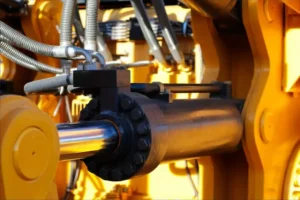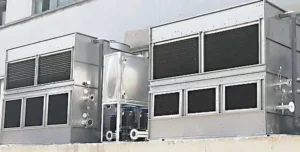Furnace Construction Tools
- Selection of Furnace Building Machine: The quality of furnace construction is directly influenced by the choice of furnace building machine. In our workshop, we use electric vibrating machines. When selecting these machines, factors such as power, frequency, and weight must meet the specific requirements of the workshop. This ensures the avoidance of stratification during furnace construction and ensures a dense furnace lining.
- Furnace Construction Tools: Workshop tools include ramming forks and flat hammers. Ramming forks are used for tamping the furnace bottom and walls, while flat hammers are used to flatten the tamped furnace bottom.
- Crucible Mold Production Considerations: Several points need attention in crucible mold production:
- Proper design of exhaust holes to facilitate the release of water vapor during drying.
- Rounded corners to avoid sharp angles.
- Grinding and smoothing of weld seams.
- Ensuring adequate wall thickness of the crucible mold to prevent deformation during ramming. Additional reinforcement ribs may be welded inside the mold to prevent deformation during tamping.

Pre-furnace Preparation Work
Before furnace construction, thorough preparation is essential. This includes:
- Checking coils for damage and taking necessary measures for repair.
- Preparation and inspection of various furnace construction tools.
- Ensuring the furnace building machine is securely fastened and ramming forks are firmly attached to prevent foreign objects from falling into the furnace lining.
- Preparation of furnace construction materials, ensuring packaging paper is cut open flat to prevent it from falling into the lining during feeding.
- Preparation of lighting tools for observing the furnace construction process.
- Inspection of crucible molds for any deformities, with rust on the mold surface cleaned off and the mold surface smoothed to prevent sand from the lining from being expelled through the exhaust holes.
Furnace Construction Process
The quality of the furnace bottom and walls directly affects the lifespan of the furnace, making this stage crucial. In our medium-frequency furnace, the bottom thickness is 300 mm, and the wall thickness is 110 mm.
- Furnace Bottom Construction: After adding 16 bags of 25 kg furnace lining sand, it is tamped by three furnace building machines for approximately 50 minutes to ensure a solid bottom.
- Placement of Crucible Mold: After constructing the bottom, the crucible mold is placed in position and aligned using a positioning ruler. Any deviation in dimensions should be less than 5 mm. The mold is then secured with wooden wedges, and pressure furnace iron blocks are inserted to prevent movement during ramming. Quartz sand is then tamped between the crucible and asbestos cloth using a flat shovel.
- Layered Filling: Due to the difficulty of compacting the inclined portions of the crucible mold, the first layer of filling should be lighter to avoid incomplete compaction or stratification. Subsequent layers (2nd to 6th) are filled with 6 bags each. Each layer is rammed for approximately 30 minutes to ensure proper compaction and to prevent stratification.
- Finishing Touches: After completing the layers, any coarse grains floating on the surface are removed to prevent stratification. The furnace is then sealed with a mixture of quartz sand, water glass, and water, which is tightly tamped and leveled. Finally, asbestos boards are placed over the furnace, thermocouples are inserted and secured, and preparations for drying are made.







